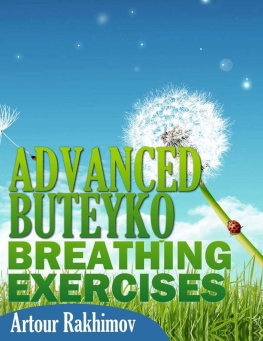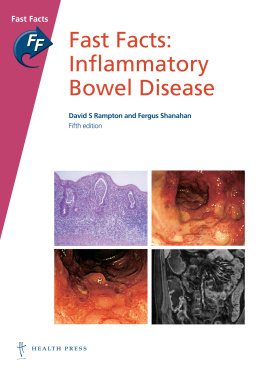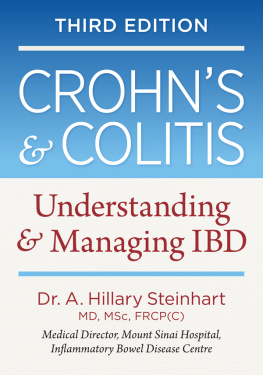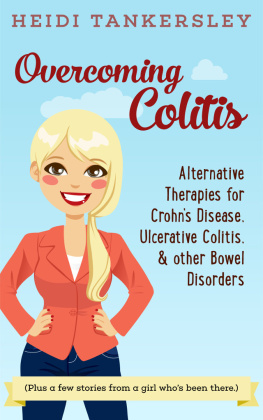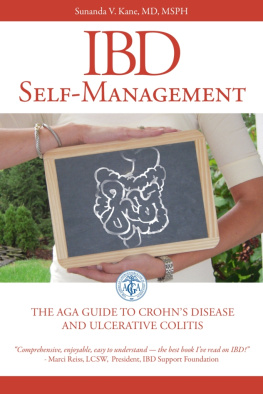Table of Contents
Crohn's Disease and Colitis: Hidden Triggers and Symptoms
(Crohn's Disease and Colitis Books)
Artour Rakhimov (PhD)
Disclaimer
The content provided herein is for information purposes only and not intended to diagnose, treat, cure or prevent digestive problems or any other chronic disease. Always consult your doctor or health care provider before making any medical decisions. The information herein is the sole opinion of Dr. Artour Rakhimov and does not constitute medical advice. These statements have not been evaluated by the Ontario Ministry of Health nor by the World Health Organization. Although every effort has been made to ensure the accuracy of the information herein, Dr. Artour Rakhimov accepts no responsibility or liability and makes no claims, promises, or guarantees about the accuracy, completeness, or adequacy of the information provided herein and expressly disclaims any liability for errors and omissions herein.
Content copyright
Content copyright Dr. Artour Rakhimov. All rights reserved.
This book is copyrighted. It is prohibited to copy, lend, adapt, electronically transmit, or transmit by any other means or methods without prior written approval from the author. However, the book may be borrowed by family members.
Introduction
Contemporary books, internet sources and articles on IBD (inflammatory bowel disease), including books written by doctors and nutritionists, are full of myths and fantasies about causes and solutions to this health problem. IBD includes Crohn's disease and ulcerative colitis.
These are the most stubborn and difficult-to-treat digestive problems. At the present moment, most people with Crohns disease require surgical intervention during their lifetime. There is no known cure for ulcerative colitis, and popular therapies may only reduce some symptoms of ulcerative colitis. This book focuses on these, most difficult conditions.
As a result of popular treatment methods, people are mainly busy with endless changes in their diet and the daily use of probiotics and other supplements. These treatment programs are sometimes sprinkled with ideas of better chewing, more exercise and other lifestyle changes. Typical success rates for most methods are virtually never reported since they are usually much less than 50% in the short run. In the long run, since there are no criteria for normal or good digestion, many of the recovered people will get the same and sometimes other symptoms some weeks or months later.
There are simply no books and internet resources that provide even a list of specific signs of normal digestive health. These signs do exist, and they include such factors that are virtually never mentioned in the medical literature or sources related to alternative medicine. For example, a person with normal digestive health does not require any toilet paper due to the absence of soiling (i.e., no residue is left on the anus after a bowel movement). Also, bowel movements are regular, and the feces do not produce any odor and do not leave marks on the toilet bowl.
If someone has a GI problem (such as inflammatory bowel disease), they always require use of toilet paper and the degree of soiling generally correlates with the severity of their digestive problem. Most ordinary people require toilet paper as well. This is an indicator of their poor GI health.
A person with normal digestion is able to hold up to 1 liter (4.2 cups) of urine in the urinary bladder, while modern sources do not even mention frequent urination with reduced urinary volume as one of the key symptoms of active digestive problems, such as Crohn's disease or ulcerative colitis.
Normal digestive health is also manifested in the absence of a tongue coating: scraping the tongue does not yield any white or yellow thick coating. Normal digestion means that there is no need to regularly or perpetually consume pounds of yogurt, probiotics, and/or any other fermented foods due to the continuous presence of good bacteria in the gut since the healthy immune system does not allow pathogens to reside on the surface of the gut and form biofilms.
All mentioned and other signs of good digestion relate to normalization of gut flora and the absence of pathological microbial films on the surface of the small intestine. This is another key topic that is rarely discussed. Formation of biofilms by pathogens is the norm in cases of inflammatory bowel disease. These biofilms prevent absorption of nutrients and pollute the body with toxins.
Soiling has a very simple cause directly related to biofilms. In fact, soiling indicates a dominance of common pathogens in the gut, such as Candida Albicans and H. Pylori. In conditions of low body O2, pathogens are able to survive and even thrive on the mucosal lining of the GI system. Biofilms are created by sticky pathogens, while good bacteria, which favor the absence of soiling, are unable to adhere to the surface of the gut. (The same sticky pathogens make ones stool greasy and leave marks on the walls of the toilet bowl.)
When people improve their body-O2 content up to the medical norm (40 seconds for the body-oxygen test), regardless of their initial health states and existing digestive problems, they naturally acquire these and other signs of good digestive health. However, people with IBD are not able to increase their body-O2 content (it remains at about 20-25 seconds) due to digestive flare-ups or acute exacerbations. This happens due to hidden triggers that chronically keep the gut inflamed.
Therefore, it is crucial to find out and address all those triggers and lifestyle factors that make their health worse.
You can consume tons of super foods and supplements, observe the most stringent diets for years, practice yoga and many other techniques for many hours every day, but if your body-O2 content remains unchanged, then the state of your immune system, blood flow and oxygenation of the GI organs, and overall health will also remain unchanged. If you increase your body O2 up to 40 or more seconds, then you will naturally acquire the main signs of good (or normal) digestive health.
1. Good and poor digestive health
In this chapter, we are going to focus on general topics related to good digestive health, common symptoms of poor digestive health, causes of digestive problems in modern people, and expected effects of increased body oxygenation on digestive problems and restoration of normal digestive health.
1.1 Common symptoms of digestive problems
Common symptoms of GI problems are known and described in many books and other information sources. These symptoms can appear within hours after meals, or can even be triggered by other factors (that are discussed later). These GI symptoms include:
- bloating
- belching
- flatulence
- diarrhea
- constipation
- fullness
- nausea
- rectal itching.
There are many additional symptoms that are usually ignored by most doctors. However, these symptoms are important due to their intimate relationship with digestive health. This relates to such symptoms as tongue coating, frequent urination, constantly moist nose, ear buzzing, cold feet, unquenchable thirst, degree of soiling (how much toilet paper is required), changes in water color in the toilet bowl, shape and consistency of stool, and others.
Digestive symptoms that require medical attention:
- rectal bleeding
- anemia
- lack of appetite
- significant weight loss
- vomiting
- middle of the night abdominal pain and cramping.
1.2 Signs of good digestive health (absence of digestive problems)
Normal digestive health can be described as the ability of the GI tract to produce digestive enzymes, efficiently absorb nutrients, prevent growth of pathogens, recycle useful nutrients and chemicals, and eliminate toxins and unwanted substances.


